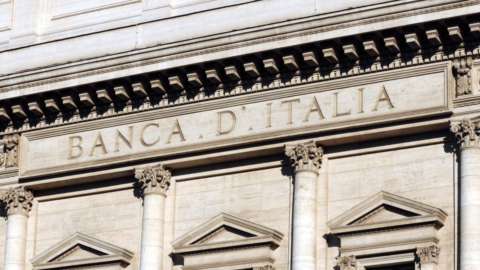“Il Recovery Plan it must pass through the supply chains and production districts”. A few days after the European aid plan was approved in Parliament, Carlo Messina, CEO of Intesa Sanpaololaunches the candidacy of the first Italian bank to become “the country's financial infrastructure, the link between funds and projects and Italian businesses and households. Intesa Sanpaolo is the bank of the districts, no operator in Italy is as present as we are in contact with local businesses. And the districts are the productive infrastructure that drives Italian growth, on which to focus for recovery. Only by accelerating growth can debt maintain sustainability. We have estimated – continued Messina – that when the European plan becomes fully operational, by 2026, we will be able to disburse 270 billion euros to businesses involved in the different modules of the Recovery Plan. We also have a ceiling of 140 billion to finance household mortgages, always linked to the plan, such as green construction for example". In total, therefore, over 400 billion to the country system.
The speech of the CEO of Intesa Sanpaolo, who recognizes in the Italian districts and territorial supply chains as "an absolute strength of the country, we are unique in Europe", arrives not by chance at the conclusion of the presentation of the 13th Report on the Economy and Finance of Industrial Districts in 2020, the latest from the bank's Research Department, from which a confirmation emerged: district businesses resist the crisis better than the others, especially in this phase of global health emergency, which has put international supply chains in difficulty. Indeed, it is precisely in this phase that the centrality of the territory, that the proximity of suppliers still play a decisive role, also to make the "made in Italy" even more "in Italy": many sectors in difficulty, in particular that of fashion , are increasingly "forced" to shorten the production chain, turning to companies in their own district and less abroad (especially China).
The pre-final figure for district businesses in 2020 speaks of an unfortunately expected collapse of 12,2%, which will only be partially offset by the 11,8% rebound expected this year. The Intesa Sanpaolo study processed the data of 20.000 district businesses, comparing them with those of about 60.000 non-district businesses, to a total turnover of 769 billion euros, of which 254 billion relating to districts. "We have observed - commented the bank's chief economist Gregorio De Felice - that the districts are reacting better, they are more resilient thanks above all to two factors: the ability to accumulate liquidity and assets in past years, and competitiveness on international markets". In fact, the study finds that 25% of the companies in the districts recorded losses in 2020: 15% of the large ones, 27% of the small or micro ones, as much as 34% in the fashion sector, one of the most affected if not the most hit.
However, the companies in the districts have been "ants": "50% of those making a loss - explained De Felice - have adequate internal liquidity to survive, i.e. higher than the negative cash flow of 2020. Even 80% of those in loss had sufficient equity to cope with the erosion of revenue. Furthermore, these companies confirm a good international competitive positioning”. Just two facts about all of them: 63,6% of the district enterprises export, against 53,5% of non-district ones; non-district companies produce 49 patents for every 100 companies, against 72,6 for every 100 of their district counterparts. With regard to the Recovery Plan, which is largely based on green and digital technologies, the districts have shown - according to Intesa Sanpaolo - greater sensitivity on these issues as well.
For example, digital is driving mechanics, one of our strengths, from which a good rebound is expected in 2021 thanks also to the technological improvement that brings benefits on quality and on the containment of production costs. As far as environmental sustainability is concerned, out of the total patents of industrial districts filed between 1998 and 2018, 5% is a green patent, while by now 12 out of 100 district companies are energetically autonomous thanks toself-production of renewable energy.





